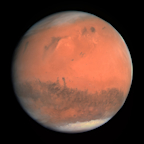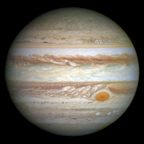Search results
Dec 26, 2014 · The same applies to the beams of light above them. The Sun is very far away and the beams are pretty much parallel, but they're pointing towards you, and perspective makes them appear to converge towards the vanishing point - which in this case is the Sun's location in the sky. The technical term for these beams is "crepuscular rays."
If you want your eyes to receive 32000~100000lux, you need to stare at the sun in a sunny day.If you stare at the ground in a sun-exposure area, your eyes receives much less than 32000 lux. If you stare at a shedded ground in a sunny day, your eyes receive slight less than 10000lux. human eyes could not tolerate 32000lux more than 5 secounds.
Oct 8, 2013 · A well known story "Two Children arguing about the sun" (From Lie Zi, ca. 500BC): On the way traveling to the east, Confucius saw two children were arguing. One child thought that the sun is nearer to us at daybreak and far away from us at noon, because in the morning it is as big as the canopy of a carriage, but at noon only the size of a ...
The continuous spectrum of the visible photosphere of the Sun is attributable to the radiative equilibrium of the $\mathrm{H}^{-}$ ion. This has been recognised for at least 80 years ( Wildt 1939 ). This ion forms by the attachment of a free electron (with a continuous spectrum of energies) to a hydrogen atom, emitting a continuous spectrum of photons in the process.
Apr 27, 2018 · So my conclusion is that dropping Jupiter into the Sun in this scenario would be like dropping a depth charge, with a lag of order $10^ {5}$ years before the full effects became apparent. Scenario 2: Jupiter arrives at Roche limit (just above the solar surface) having mysteriously lost a large amount of angular momentum.
Feb 15, 2011 · Another way of calculating the earth - sun distance is to look at the centrifugal and the gravitational force. This solution assumes that one already knows the mass of the sun, but thats a different problem ;-).
When the moon is at perigee, and the earth at aphelion, the moon will seem larger than the sun than when the moon is at apogee and earth at perihelion. However, the eccentricities of these orbits are low, and the moon always seems "about the same" as the sun. This is a coincidence, both that its size is what it is, and that we're here to ...
Mar 10, 2020 · Now the Sun loses a small amount of mass. The Earth is still traveling at the same velocity, and requires the same centripetal force to maintain the same circular orbit. Unfortunately, the reduced mass of the Sun no longer supplies the required centripetal force. So the Earth is now in a slightly elliptical orbit, passing perihelion.
Feb 15, 2017 · The Sun has actually set/risen and we see it due to the way light is bent across the atmosphere. Apparently due to coincidence of the size and distance of the sun, its exactly the same size - so if we see 50% of the sun, the sun is 50% below the horizon. So, I understand all this, so here is my question :
Aug 27, 2015 · Incandescent light bulbs (the ones with a filament) operate similarly to the sun - they emit light because the filament heats up, and when objects heat up they emit a lot of light. If you put your hand in front of an incandescent light bulb you will feel a lot of heat, because most of the light it emits is infrared.



















